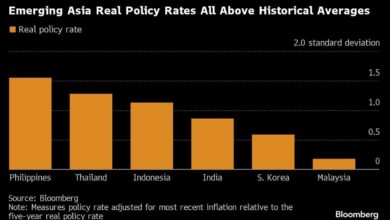Nigeria and Kenya suffer their worst currency hits in over 20 years with no hope in sight

The chart revealed how much these currencies fell against the US dollar, through last year. The Nigerian Naira (NGN) headed the pack, taking an overwhelming lead with a stunning 55% fall.
As of the time the report was released, the Naira stood at N1,043, per $1 (US dollar). As of Wednesday, however, the naira closed trading at N1035.12/$ on the official Investor and Exporter foreign exchange window.
The steep fall of the Naira is a result of the country’s new administration’s decision led by the president, Bola Tinubu, to float the currency. In June 2023, the Central Bank of Nigeria (CBN) officially confirmed the removal of the rate cap on the naira at the Investor’s and Exporters’ (I&E) Window of the foreign exchange market.
Additionally, the president had removed fuel subsidies shortly after assuming office in May, as his first official policy, which drove inflation to new highs, and by extension devalued the country’s currency.
Kenya’s central bank increased its benchmark interest rate on December 5th for the second time since Governor Kamau Thugge took office in June, citing the need to support the country’s damaged shilling. “The monetary policy committee increased the rate by 200 basis points to 12.5%, the largest increase since 2011,” the report by Bloomberg reads.
“Outflows by foreign investors on the Nairobi Securities Exchange were 1.18 billion shillings ($7.53 million) in the three months through September, compared with 1.48 billion shillings the previous quarter, according to the markets regulator,” the report adds.
Similar to Nigeria, policies such as the removal of fuel subsidies and the increase of taxes, contributed to the economic challenges faced in the East African country.
In August, Business Insider Africa reported that the Kenyan shilling was under pressure due to some commercial banks in Nairobi already selling US dollars beyond the Sh150 threshold, which spurred a new round of currency-driven price rises on imported goods including fertilizers, electronics, and vehicles.
The disadvantages of poor-performing currencies in African countries are multifaceted and interconnected, most countries on the continent grapple with similar economic complications, as demonstrated by the high level of African representation on such a chart.
Inflation, unstable government, reduced foreign direct investments, drastic policy changes, and unstable capital flows, amongst other issues, have driven the poor performances of the currencies.




